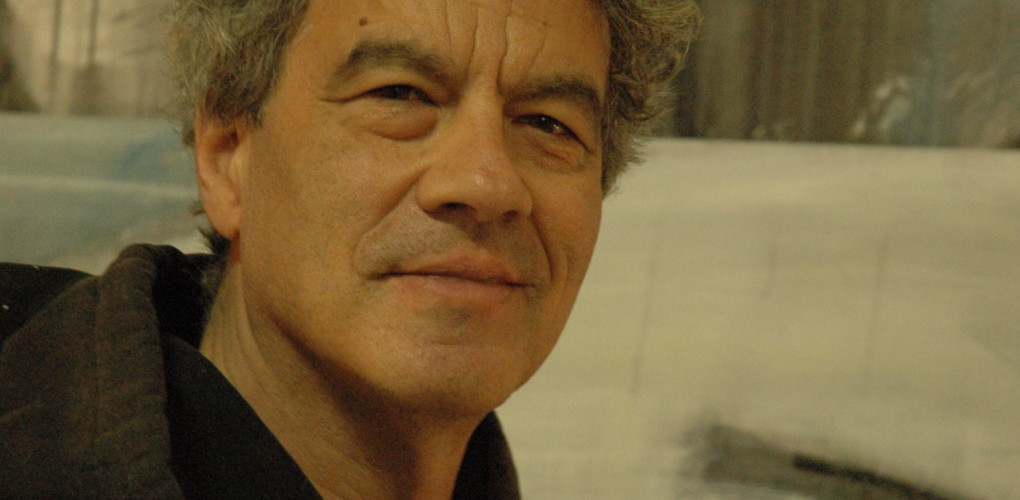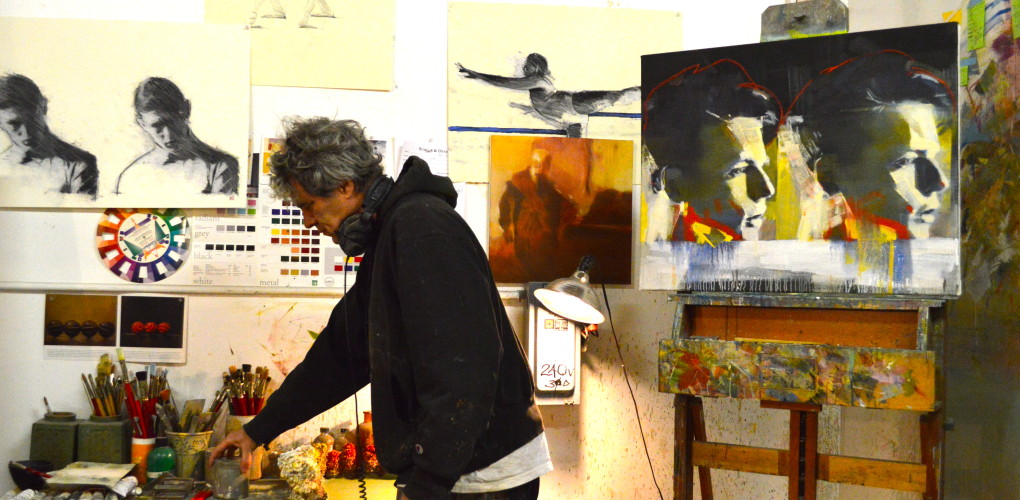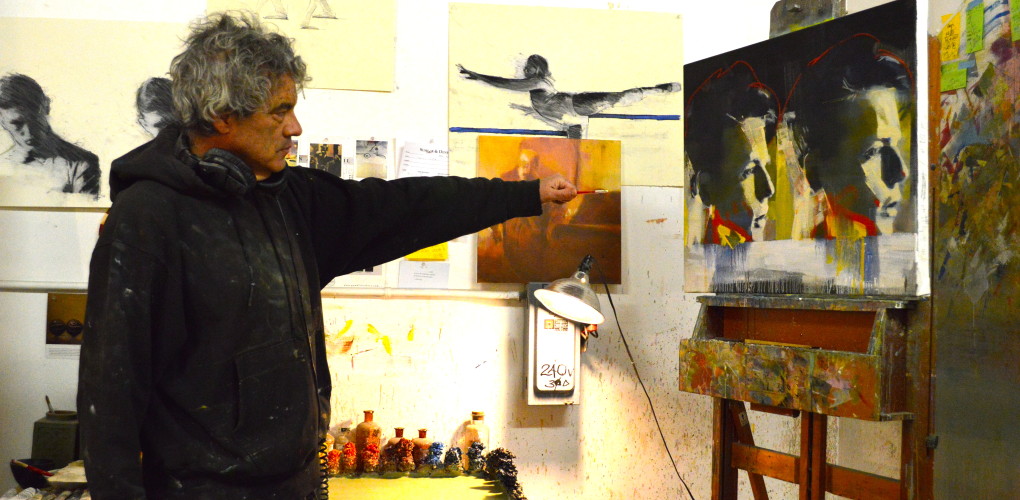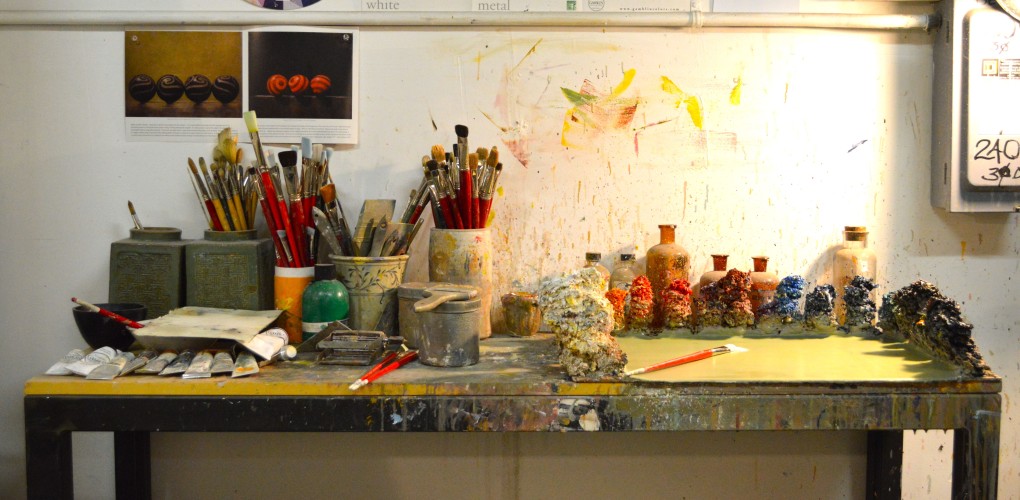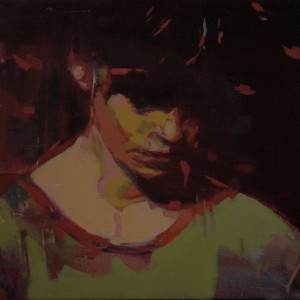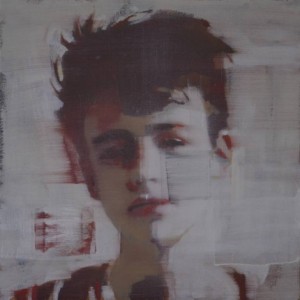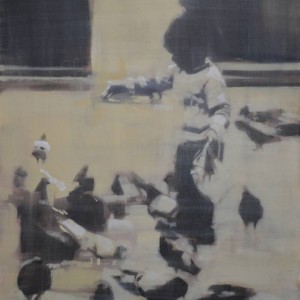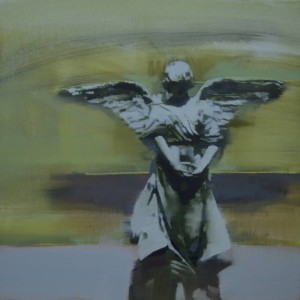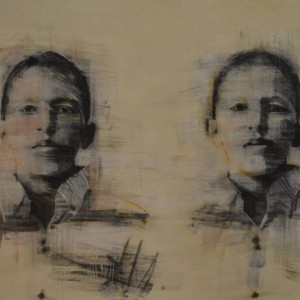Inside the Studio
 Mark Horst
Mark Horst
Favorite material to work with?
The materials I use always bring me to the edge of chaos. I love the messiness of paint and its drippy, smeary, oily self. I love paint on the canvas, the rough tooth of the fabric. I love scraping and blurring wet paint with cheap, rough brushes or latex scrapers. I love to draw with conte, ink or charcoal, sometimes into wet paint and sometimes onto toothy paper.
All of these materials are pathways toward engaging the world, slowing down my looking. These brushes are extensions of my hands and eyes; their marks are one of the ways that I am present in the painting no matter what the subject is. You could say that every painting has a piece of self-portraiture to it.
What themes do you pursue?
Right now I’m working on a series of double portraits. Most of them I’ve called, “Glimpses.” I like the way the two images speak to one another. What’s missing in one seems to find some complement in the other. It’s impossible to paint the same image twice in the same way, and so there are differences in the faces that I can’t explain or control or foretell.
Putting two of the same faces next to one another is a reminder of some incompleteness in the image and in our looking. I think most of what we see of the world and of one another are “glimpses;” something fast and fleeting and incomplete. If you watch people in museums looking at paintings, it seems that we hardly look at all. Even the paintings that appeal to us get little pause and then we’re on to the next. The double portraits say, “Look some more.”
How many years as an artist?
When I was a kid, I built a potter’s wheel and kiln. I was the only boy in the junior high art club. So I guess I’ve been trying to be an artist—in one form or another— most of my life.
What was the best advice given to you as an artist?
“Stop looking for advice. Pilot your own ship. Look at your own work and then look at it some more; it’s telling you most of what you need to know.”
Where is your studio?
I rent space in an old factory building near downtown Albuquerque. It’s cold; it’s small; it’s dusty; it’s heaven.
Art school or self-taught?
I’ve had so many teachers, it would be a lie to say that I got here myself. I’ve spent time in art school and lots of time learning from other painters. I guess I’ve spent even more time trying to learn from my own work.
Prefer to work with music or in silence?
Some days I need Jesse Ware. Some days I need Arvo Paart. Some days I need quiet.
What’s around the corner from your place?
Well, there’s a railroad spur running just north of the studio. Homeless people live under the loading dock. I drew a portrait of Rembrandt on the wall facing them and a man named Richard told me it looked just like Rembrandt.
If you couldn’t be an artist, what would you do?
Today I would go to Jennifer James 101 (my favorite restaurant) and see if the chef would hire me to help her cook.
What do you collect?
I still love pottery, and now I’m living near some fabulous Pueblo potters. I’m hoping to get a bread bowl from Kewa potter Thomas Tenorio. My wife is a fabric artist and we spend a lot of time looking at hand-dyed fabric and Indian saris.
Favorite contemporary artist?
I have lots of favorites. Today I’m looking at Kim Froshin over in San Francisco. I love the way she has taken the Bay Area figurative tradition into her own work.
If you could only have one piece of art in your life, what would it be?
Every day I want a different painting, so that’s kind of hard. But if I started with Chardin’s self portrait, maybe I could trade for Rembrandt’s portrait of Vatters next week.
Who are your favorite writers?
Cormac McCarthy keeps my juices flowing and reminds me of the deep streams running under my own feet. How can you not love someone who writes this:
“They heard somewhere in that tenantless night a bell that tolled and ceased where no bell was and they rode out on the round dais of the earth, which alone was dark and no light to it and which carried their figures and bore them up into the swarming stars so that they rode not under but among them and they rode at once jaunty and circumspect, like thieves newly loosed in that dark electric, like young thieves in a glowing orchard, loosely jacketed against the cold and ten thousand worlds for the choosing.”
How can you not paint after that?
Use anything other than paint?
I love drawing into my paint. Sometimes brushes are too symphonic. Sometimes dragging a stick of pastel through wet paint is like picking up an electric guitar and letting it scream.
Is painting dead?
My paintings are not dead. In the Jewish tradition it’s considered rude to look at a dead person because they can’t look back. When I’m painting, I’m trying to stay alert enough to recognize when the image I’m working with comes to life. When I see someone looking back at me, I know the work is done.
